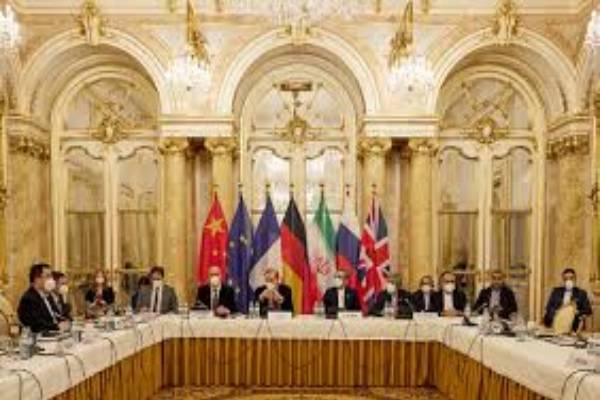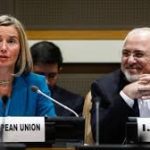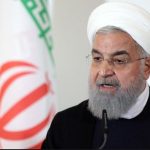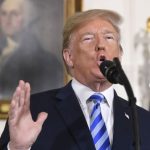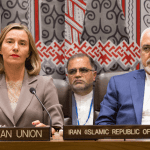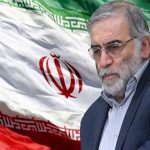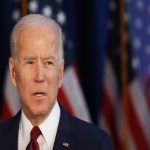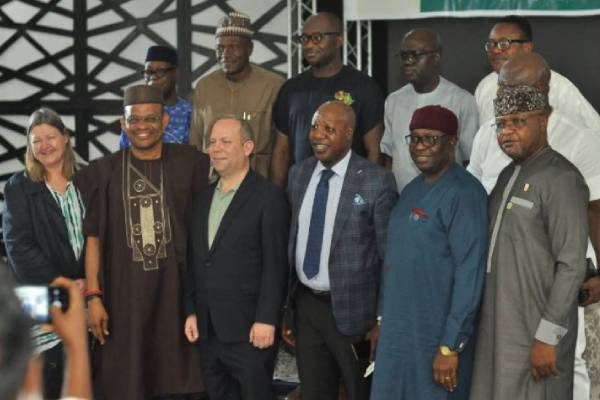Iran is getting closer to a nuclear agreement, according to Western sources, who claim that progress has been made in renewing the 2015 agreement with international powers.
Iran’s foreign minister Hossein Amirabdollahian said he was ready to travel to Vienna “immediately” to sign a deal with the US to resurrect the 2015 nuclear deal, but only if western negotiators agreed to address Tehran’s outstanding demands.
He told the EU, according to Iran’s foreign ministry. “I am ready to go to Vienna as soon as western parties accept to observe our remaining red lines.”
Germany, France, the United Kingdom, Russia, and China are among the agreement’s signatories. Because of the extent of Iran’s nuclear developments, which include enriching uranium close to weapons-grade, Western officials have been warning for weeks that time is running out to rescue the agreement. Tehran, on the other hand, has stated that it will not hurry into a deal at any cost.
The head of the International Atomic Energy Agency, Rafael Grossi, was set to visit Tehran on Saturday to tackle one of the sticking points in the talks: a disagreement over a blocked UN nuclear watchdog investigation into traces of uranium found at ancient, undeclared locations.
Tehran wants the investigation to be completed, but Grossi warned last week that if there are unresolved issues with the IAEA, “people cannot anticipate a return” to the nuclear deal.
Tehran’s demands that the Biden administration provide guarantees that no future US president can unilaterally exit the deal are also major sticking issues. When Trump pulled the US out of the agreement in 2018 and slapped hundreds of penalties on Iran, the crisis erupted.
Trump placed sanctions on dozens of key Iranian officials, including President Ebrahim Raisi and the office of Ayatollah Ali Khamenei, Iran’s supreme leader, before he took office last year. He also declared the Revolutionary Guard, an elite force, to be a terrorist organization.
Iran would be able to increase its oil exports if a deal is reached, as the Russian invasion of Ukraine has pushed crude prices to decade-highs, with prices above $100 a barrel.
Iran is thought to be selling around 1 million barrels of petroleum per day, but Iran’s oil minister, Javad Owji, was cited this week as stating that if sanctions are repealed, the Islamic republic could reach its “maximum oil production potential in less than two months.” Iran’s oil exports peaked at roughly 2.5 million barrels per day a day before Trump pulled out of the nuclear deal.
However, analysts warn that the Ukraine crisis and rising energy costs could encourage Tehran to believe that its negotiation position has strengthened.
Iran is getting closer to a nuclear agreement, according to Western sources, who claim that progress has been made in renewing the 2015 agreement with international powers.
Iran’s foreign minister Hossein Amirabdollahian said he was ready to travel to Vienna “immediately” to sign a deal with the US to resurrect the 2015 nuclear deal, but only if western negotiators agreed to address Tehran’s outstanding demands.
He told the EU, according to Iran’s foreign ministry. “I am ready to go to Vienna as soon as western parties accept to observe our remaining red lines.”
Germany, France, the United Kingdom, Russia, and China are among the agreement’s signatories. Because of the extent of Iran’s nuclear developments, which include enriching uranium close to weapons-grade, Western officials have been warning for weeks that time is running out to rescue the agreement. Tehran, on the other hand, has stated that it will not hurry into a deal at any cost.
The head of the International Atomic Energy Agency, Rafael Grossi, was set to visit Tehran on Saturday to tackle one of the sticking points in the talks: a disagreement over a blocked UN nuclear watchdog investigation into traces of uranium found at ancient, undeclared locations.
Tehran wants the investigation to be completed, but Grossi warned last week that if there are unresolved issues with the IAEA, “people cannot anticipate a return” to the nuclear deal.
Tehran’s demands that the Biden administration provide guarantees that no future US president can unilaterally exit the deal are also major sticking issues. When Trump pulled the US out of the agreement in 2018 and slapped hundreds of penalties on Iran, the crisis erupted.
Trump placed sanctions on dozens of key Iranian officials, including President Ebrahim Raisi and the office of Ayatollah Ali Khamenei, Iran’s supreme leader, before he took office last year. He also declared the Revolutionary Guard, an elite force, to be a terrorist organization.
Iran would be able to increase its oil exports if a deal is reached, as the Russian invasion of Ukraine has pushed crude prices to decade-highs, with prices above $100 a barrel.
Iran is thought to be selling around 1 million barrels of petroleum per day, but Iran’s oil minister, Javad Owji, was cited this week as stating that if sanctions are repealed, the Islamic republic could reach its “maximum oil production potential in less than two months.” Iran’s oil exports peaked at roughly 2.5 million barrels per day a day before Trump pulled out of the nuclear deal.
However, analysts warn that the Ukraine crisis and rising energy costs could encourage Tehran to believe that its negotiation position has strengthened.
Iran is getting closer to a nuclear agreement, according to Western sources, who claim that progress has been made in renewing the 2015 agreement with international powers.
Iran’s foreign minister Hossein Amirabdollahian said he was ready to travel to Vienna “immediately” to sign a deal with the US to resurrect the 2015 nuclear deal, but only if western negotiators agreed to address Tehran’s outstanding demands.
He told the EU, according to Iran’s foreign ministry. “I am ready to go to Vienna as soon as western parties accept to observe our remaining red lines.”
Germany, France, the United Kingdom, Russia, and China are among the agreement’s signatories. Because of the extent of Iran’s nuclear developments, which include enriching uranium close to weapons-grade, Western officials have been warning for weeks that time is running out to rescue the agreement. Tehran, on the other hand, has stated that it will not hurry into a deal at any cost.
The head of the International Atomic Energy Agency, Rafael Grossi, was set to visit Tehran on Saturday to tackle one of the sticking points in the talks: a disagreement over a blocked UN nuclear watchdog investigation into traces of uranium found at ancient, undeclared locations.
Tehran wants the investigation to be completed, but Grossi warned last week that if there are unresolved issues with the IAEA, “people cannot anticipate a return” to the nuclear deal.
Tehran’s demands that the Biden administration provide guarantees that no future US president can unilaterally exit the deal are also major sticking issues. When Trump pulled the US out of the agreement in 2018 and slapped hundreds of penalties on Iran, the crisis erupted.
Trump placed sanctions on dozens of key Iranian officials, including President Ebrahim Raisi and the office of Ayatollah Ali Khamenei, Iran’s supreme leader, before he took office last year. He also declared the Revolutionary Guard, an elite force, to be a terrorist organization.
Iran would be able to increase its oil exports if a deal is reached, as the Russian invasion of Ukraine has pushed crude prices to decade-highs, with prices above $100 a barrel.
Iran is thought to be selling around 1 million barrels of petroleum per day, but Iran’s oil minister, Javad Owji, was cited this week as stating that if sanctions are repealed, the Islamic republic could reach its “maximum oil production potential in less than two months.” Iran’s oil exports peaked at roughly 2.5 million barrels per day a day before Trump pulled out of the nuclear deal.
However, analysts warn that the Ukraine crisis and rising energy costs could encourage Tehran to believe that its negotiation position has strengthened.
Iran is getting closer to a nuclear agreement, according to Western sources, who claim that progress has been made in renewing the 2015 agreement with international powers.
Iran’s foreign minister Hossein Amirabdollahian said he was ready to travel to Vienna “immediately” to sign a deal with the US to resurrect the 2015 nuclear deal, but only if western negotiators agreed to address Tehran’s outstanding demands.
He told the EU, according to Iran’s foreign ministry. “I am ready to go to Vienna as soon as western parties accept to observe our remaining red lines.”
Germany, France, the United Kingdom, Russia, and China are among the agreement’s signatories. Because of the extent of Iran’s nuclear developments, which include enriching uranium close to weapons-grade, Western officials have been warning for weeks that time is running out to rescue the agreement. Tehran, on the other hand, has stated that it will not hurry into a deal at any cost.
The head of the International Atomic Energy Agency, Rafael Grossi, was set to visit Tehran on Saturday to tackle one of the sticking points in the talks: a disagreement over a blocked UN nuclear watchdog investigation into traces of uranium found at ancient, undeclared locations.
Tehran wants the investigation to be completed, but Grossi warned last week that if there are unresolved issues with the IAEA, “people cannot anticipate a return” to the nuclear deal.
Tehran’s demands that the Biden administration provide guarantees that no future US president can unilaterally exit the deal are also major sticking issues. When Trump pulled the US out of the agreement in 2018 and slapped hundreds of penalties on Iran, the crisis erupted.
Trump placed sanctions on dozens of key Iranian officials, including President Ebrahim Raisi and the office of Ayatollah Ali Khamenei, Iran’s supreme leader, before he took office last year. He also declared the Revolutionary Guard, an elite force, to be a terrorist organization.
Iran would be able to increase its oil exports if a deal is reached, as the Russian invasion of Ukraine has pushed crude prices to decade-highs, with prices above $100 a barrel.
Iran is thought to be selling around 1 million barrels of petroleum per day, but Iran’s oil minister, Javad Owji, was cited this week as stating that if sanctions are repealed, the Islamic republic could reach its “maximum oil production potential in less than two months.” Iran’s oil exports peaked at roughly 2.5 million barrels per day a day before Trump pulled out of the nuclear deal.
However, analysts warn that the Ukraine crisis and rising energy costs could encourage Tehran to believe that its negotiation position has strengthened.
Iran is getting closer to a nuclear agreement, according to Western sources, who claim that progress has been made in renewing the 2015 agreement with international powers.
Iran’s foreign minister Hossein Amirabdollahian said he was ready to travel to Vienna “immediately” to sign a deal with the US to resurrect the 2015 nuclear deal, but only if western negotiators agreed to address Tehran’s outstanding demands.
He told the EU, according to Iran’s foreign ministry. “I am ready to go to Vienna as soon as western parties accept to observe our remaining red lines.”
Germany, France, the United Kingdom, Russia, and China are among the agreement’s signatories. Because of the extent of Iran’s nuclear developments, which include enriching uranium close to weapons-grade, Western officials have been warning for weeks that time is running out to rescue the agreement. Tehran, on the other hand, has stated that it will not hurry into a deal at any cost.
The head of the International Atomic Energy Agency, Rafael Grossi, was set to visit Tehran on Saturday to tackle one of the sticking points in the talks: a disagreement over a blocked UN nuclear watchdog investigation into traces of uranium found at ancient, undeclared locations.
Tehran wants the investigation to be completed, but Grossi warned last week that if there are unresolved issues with the IAEA, “people cannot anticipate a return” to the nuclear deal.
Tehran’s demands that the Biden administration provide guarantees that no future US president can unilaterally exit the deal are also major sticking issues. When Trump pulled the US out of the agreement in 2018 and slapped hundreds of penalties on Iran, the crisis erupted.
Trump placed sanctions on dozens of key Iranian officials, including President Ebrahim Raisi and the office of Ayatollah Ali Khamenei, Iran’s supreme leader, before he took office last year. He also declared the Revolutionary Guard, an elite force, to be a terrorist organization.
Iran would be able to increase its oil exports if a deal is reached, as the Russian invasion of Ukraine has pushed crude prices to decade-highs, with prices above $100 a barrel.
Iran is thought to be selling around 1 million barrels of petroleum per day, but Iran’s oil minister, Javad Owji, was cited this week as stating that if sanctions are repealed, the Islamic republic could reach its “maximum oil production potential in less than two months.” Iran’s oil exports peaked at roughly 2.5 million barrels per day a day before Trump pulled out of the nuclear deal.
However, analysts warn that the Ukraine crisis and rising energy costs could encourage Tehran to believe that its negotiation position has strengthened.
Iran is getting closer to a nuclear agreement, according to Western sources, who claim that progress has been made in renewing the 2015 agreement with international powers.
Iran’s foreign minister Hossein Amirabdollahian said he was ready to travel to Vienna “immediately” to sign a deal with the US to resurrect the 2015 nuclear deal, but only if western negotiators agreed to address Tehran’s outstanding demands.
He told the EU, according to Iran’s foreign ministry. “I am ready to go to Vienna as soon as western parties accept to observe our remaining red lines.”
Germany, France, the United Kingdom, Russia, and China are among the agreement’s signatories. Because of the extent of Iran’s nuclear developments, which include enriching uranium close to weapons-grade, Western officials have been warning for weeks that time is running out to rescue the agreement. Tehran, on the other hand, has stated that it will not hurry into a deal at any cost.
The head of the International Atomic Energy Agency, Rafael Grossi, was set to visit Tehran on Saturday to tackle one of the sticking points in the talks: a disagreement over a blocked UN nuclear watchdog investigation into traces of uranium found at ancient, undeclared locations.
Tehran wants the investigation to be completed, but Grossi warned last week that if there are unresolved issues with the IAEA, “people cannot anticipate a return” to the nuclear deal.
Tehran’s demands that the Biden administration provide guarantees that no future US president can unilaterally exit the deal are also major sticking issues. When Trump pulled the US out of the agreement in 2018 and slapped hundreds of penalties on Iran, the crisis erupted.
Trump placed sanctions on dozens of key Iranian officials, including President Ebrahim Raisi and the office of Ayatollah Ali Khamenei, Iran’s supreme leader, before he took office last year. He also declared the Revolutionary Guard, an elite force, to be a terrorist organization.
Iran would be able to increase its oil exports if a deal is reached, as the Russian invasion of Ukraine has pushed crude prices to decade-highs, with prices above $100 a barrel.
Iran is thought to be selling around 1 million barrels of petroleum per day, but Iran’s oil minister, Javad Owji, was cited this week as stating that if sanctions are repealed, the Islamic republic could reach its “maximum oil production potential in less than two months.” Iran’s oil exports peaked at roughly 2.5 million barrels per day a day before Trump pulled out of the nuclear deal.
However, analysts warn that the Ukraine crisis and rising energy costs could encourage Tehran to believe that its negotiation position has strengthened.
Iran is getting closer to a nuclear agreement, according to Western sources, who claim that progress has been made in renewing the 2015 agreement with international powers.
Iran’s foreign minister Hossein Amirabdollahian said he was ready to travel to Vienna “immediately” to sign a deal with the US to resurrect the 2015 nuclear deal, but only if western negotiators agreed to address Tehran’s outstanding demands.
He told the EU, according to Iran’s foreign ministry. “I am ready to go to Vienna as soon as western parties accept to observe our remaining red lines.”
Germany, France, the United Kingdom, Russia, and China are among the agreement’s signatories. Because of the extent of Iran’s nuclear developments, which include enriching uranium close to weapons-grade, Western officials have been warning for weeks that time is running out to rescue the agreement. Tehran, on the other hand, has stated that it will not hurry into a deal at any cost.
The head of the International Atomic Energy Agency, Rafael Grossi, was set to visit Tehran on Saturday to tackle one of the sticking points in the talks: a disagreement over a blocked UN nuclear watchdog investigation into traces of uranium found at ancient, undeclared locations.
Tehran wants the investigation to be completed, but Grossi warned last week that if there are unresolved issues with the IAEA, “people cannot anticipate a return” to the nuclear deal.
Tehran’s demands that the Biden administration provide guarantees that no future US president can unilaterally exit the deal are also major sticking issues. When Trump pulled the US out of the agreement in 2018 and slapped hundreds of penalties on Iran, the crisis erupted.
Trump placed sanctions on dozens of key Iranian officials, including President Ebrahim Raisi and the office of Ayatollah Ali Khamenei, Iran’s supreme leader, before he took office last year. He also declared the Revolutionary Guard, an elite force, to be a terrorist organization.
Iran would be able to increase its oil exports if a deal is reached, as the Russian invasion of Ukraine has pushed crude prices to decade-highs, with prices above $100 a barrel.
Iran is thought to be selling around 1 million barrels of petroleum per day, but Iran’s oil minister, Javad Owji, was cited this week as stating that if sanctions are repealed, the Islamic republic could reach its “maximum oil production potential in less than two months.” Iran’s oil exports peaked at roughly 2.5 million barrels per day a day before Trump pulled out of the nuclear deal.
However, analysts warn that the Ukraine crisis and rising energy costs could encourage Tehran to believe that its negotiation position has strengthened.
Iran is getting closer to a nuclear agreement, according to Western sources, who claim that progress has been made in renewing the 2015 agreement with international powers.
Iran’s foreign minister Hossein Amirabdollahian said he was ready to travel to Vienna “immediately” to sign a deal with the US to resurrect the 2015 nuclear deal, but only if western negotiators agreed to address Tehran’s outstanding demands.
He told the EU, according to Iran’s foreign ministry. “I am ready to go to Vienna as soon as western parties accept to observe our remaining red lines.”
Germany, France, the United Kingdom, Russia, and China are among the agreement’s signatories. Because of the extent of Iran’s nuclear developments, which include enriching uranium close to weapons-grade, Western officials have been warning for weeks that time is running out to rescue the agreement. Tehran, on the other hand, has stated that it will not hurry into a deal at any cost.
The head of the International Atomic Energy Agency, Rafael Grossi, was set to visit Tehran on Saturday to tackle one of the sticking points in the talks: a disagreement over a blocked UN nuclear watchdog investigation into traces of uranium found at ancient, undeclared locations.
Tehran wants the investigation to be completed, but Grossi warned last week that if there are unresolved issues with the IAEA, “people cannot anticipate a return” to the nuclear deal.
Tehran’s demands that the Biden administration provide guarantees that no future US president can unilaterally exit the deal are also major sticking issues. When Trump pulled the US out of the agreement in 2018 and slapped hundreds of penalties on Iran, the crisis erupted.
Trump placed sanctions on dozens of key Iranian officials, including President Ebrahim Raisi and the office of Ayatollah Ali Khamenei, Iran’s supreme leader, before he took office last year. He also declared the Revolutionary Guard, an elite force, to be a terrorist organization.
Iran would be able to increase its oil exports if a deal is reached, as the Russian invasion of Ukraine has pushed crude prices to decade-highs, with prices above $100 a barrel.
Iran is thought to be selling around 1 million barrels of petroleum per day, but Iran’s oil minister, Javad Owji, was cited this week as stating that if sanctions are repealed, the Islamic republic could reach its “maximum oil production potential in less than two months.” Iran’s oil exports peaked at roughly 2.5 million barrels per day a day before Trump pulled out of the nuclear deal.
However, analysts warn that the Ukraine crisis and rising energy costs could encourage Tehran to believe that its negotiation position has strengthened.

